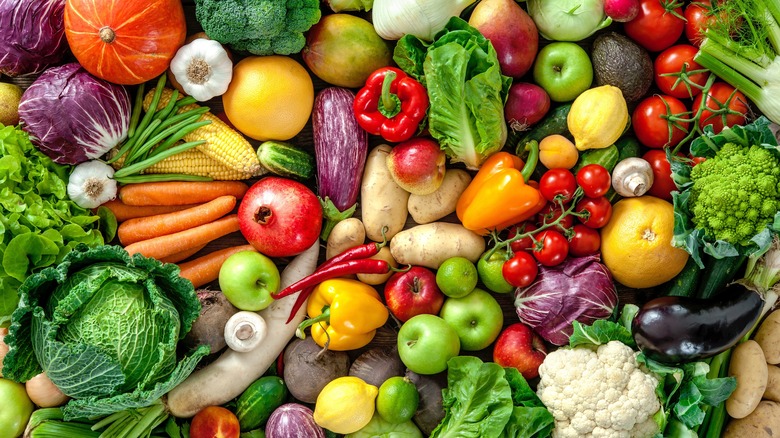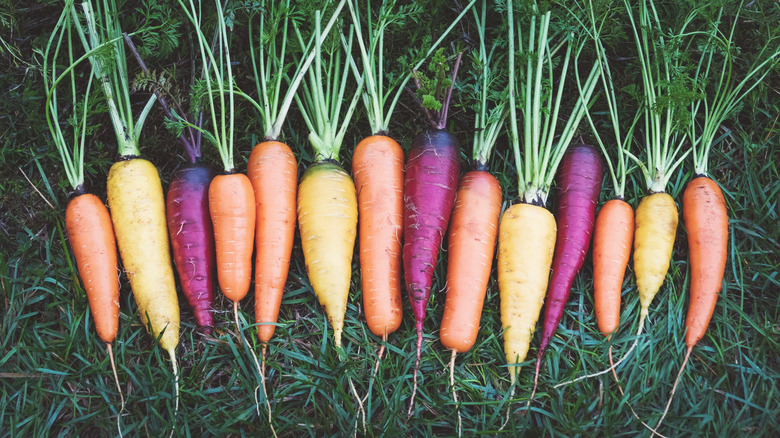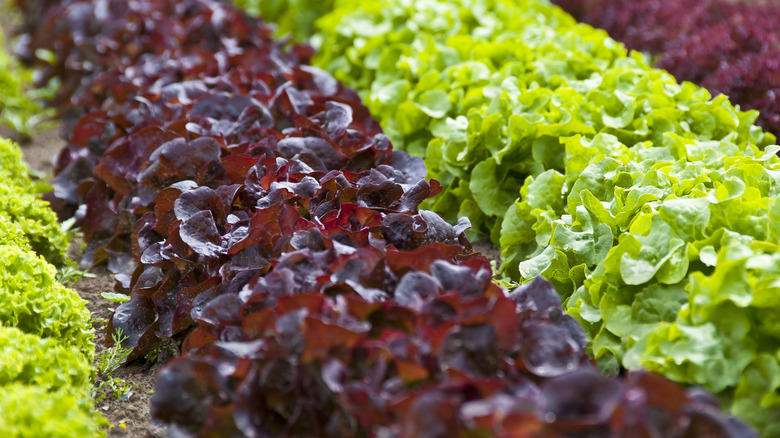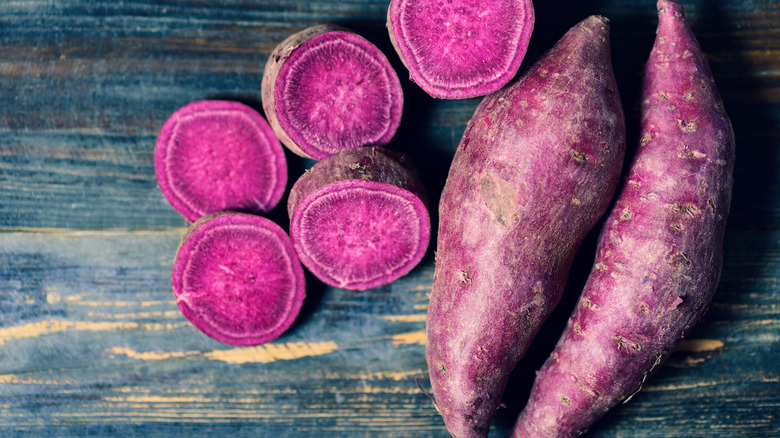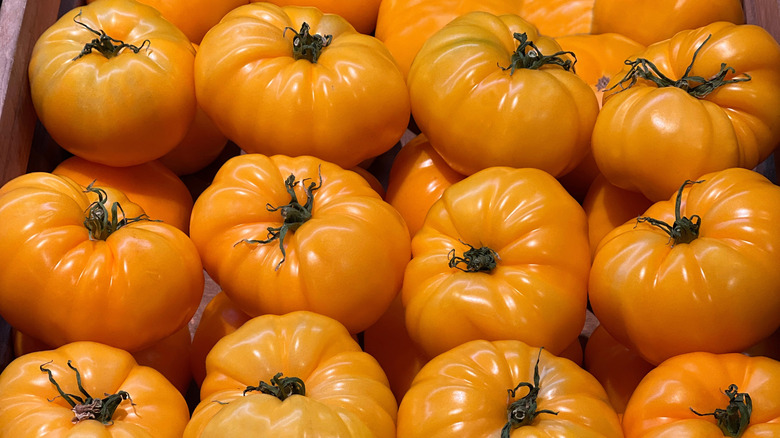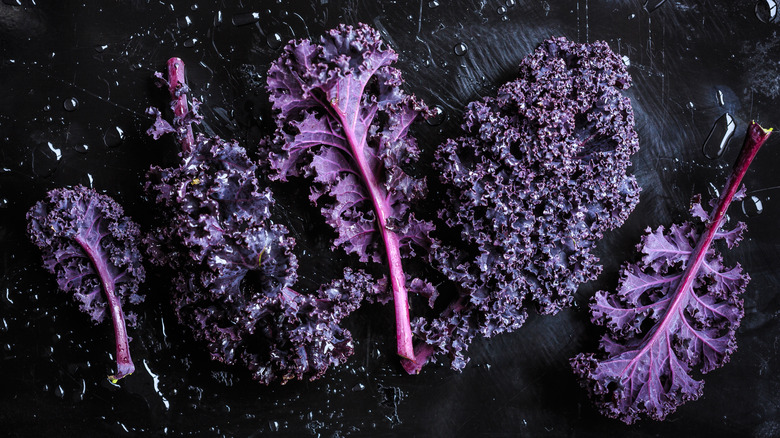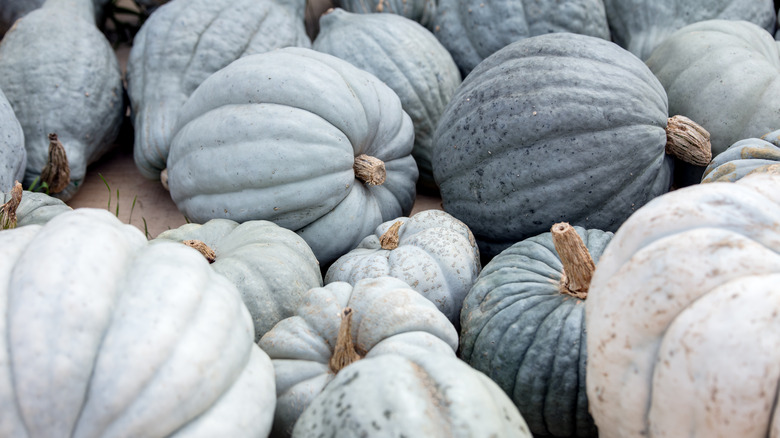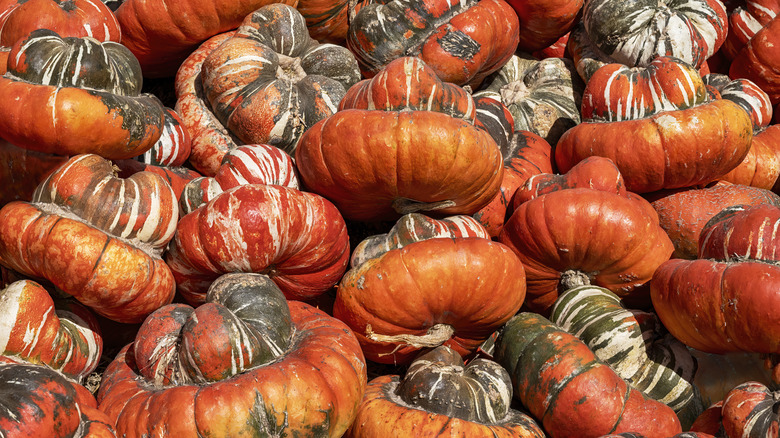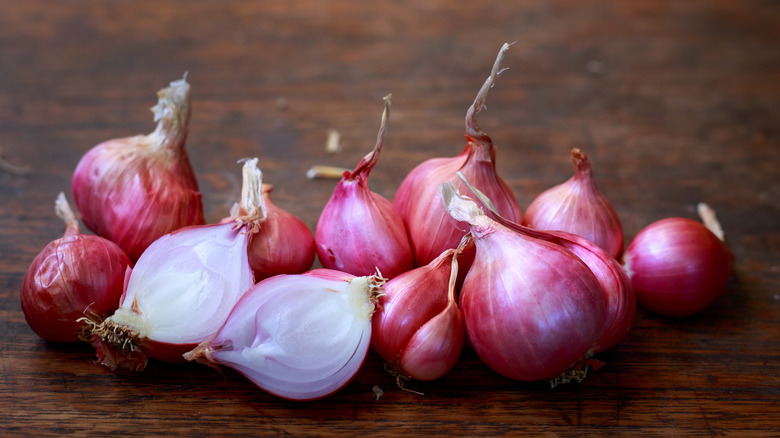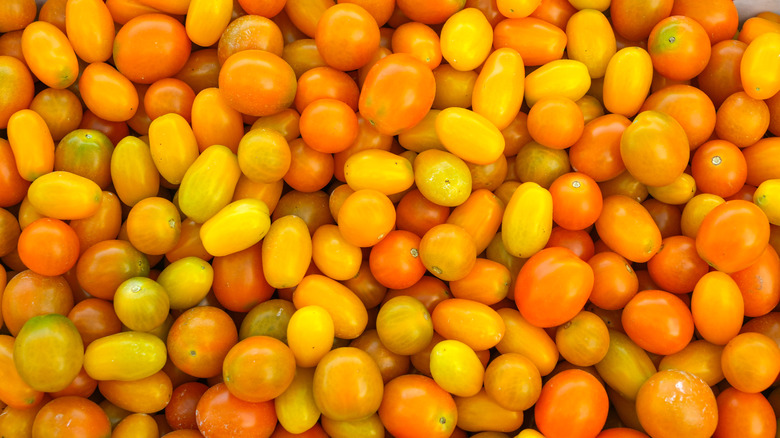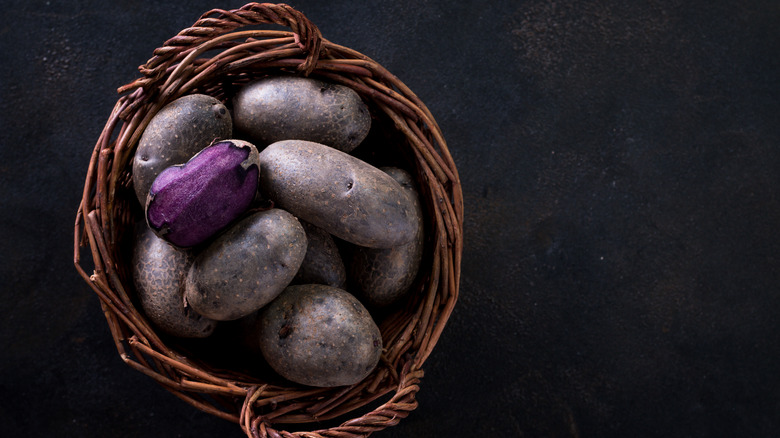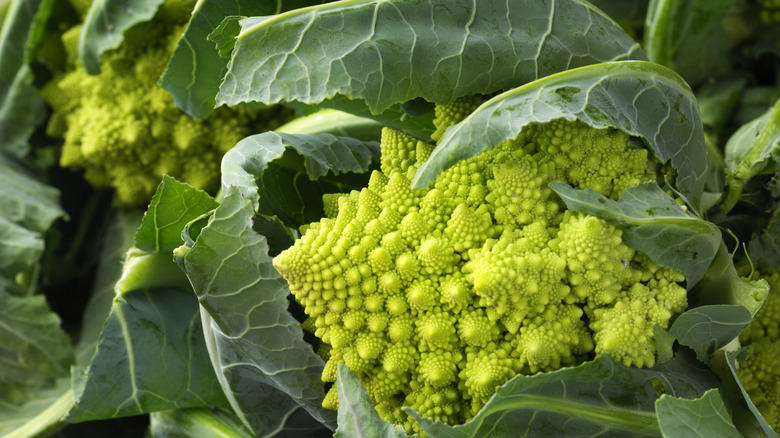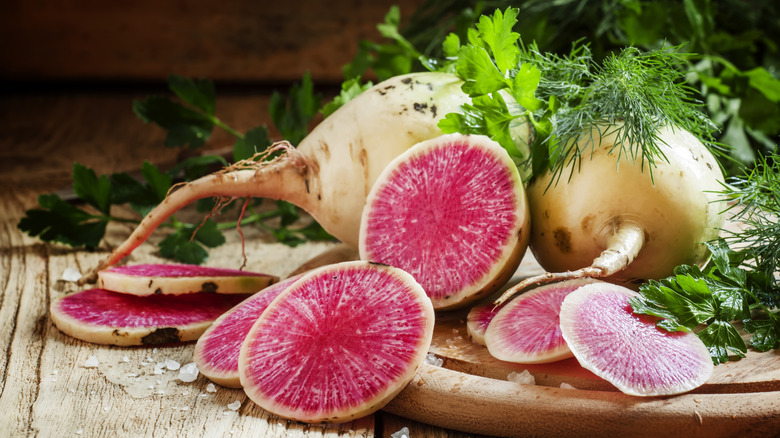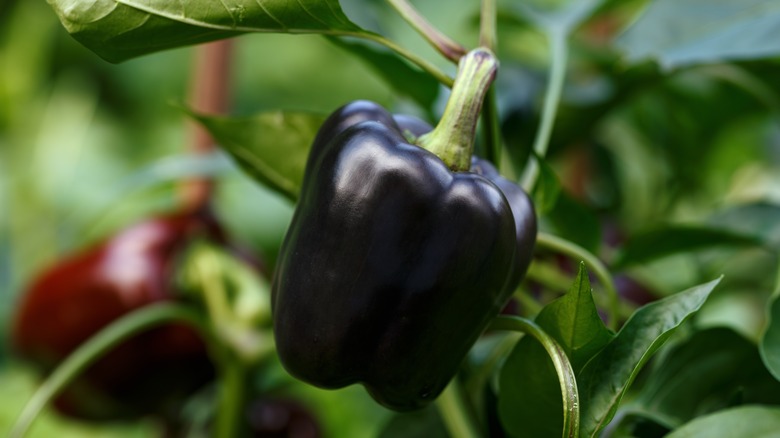Our Professional Gardener Says To Plant These Colorful Vegetables In Your Garden For A Visual Feast
Vegetable gardening obviously engages our sense of taste as we eat the fruits of our labor. However, seeing brightly-colored vegetables growing in our garden can also be thrilling to our visual sense. There are many gorgeous colors of cultivars now available to make your garden and dinner table a feast of color for the eyes. Planting vibrant varieties of lettuces, tomatoes, squash, peppers, potatoes, and other root vegetables will fill your garden and table with delicious color.
Most vegetables are known for their most common colors, such as red tomatoes, orange carrots, yellow squashes, and brown potatoes. But in recent years, with the growing popularity of heirloom vegetables as well as continued introductions of new hybrids, there are many unusual new colors out there. Even though heirloom and hybrid seeds are pollinated differently, it's perfectly fine to mix these two kinds of seeds in your garden for an abundance of diversity.
If you're growing seeds that are new to you, follow the guidelines on the seed packets in case growing conditions are different from what you're used to. Gardening forums and blogs online are also good sources of information. For a color-focused garden, you can plan your planting accordingly and place similarly-colored crops together or design your planting areas so they make a rainbow of contrast. However, ensure you keep companion planting guidelines in mind when planning where you will plant your seeds.
1. Rainbow carrots
Who doesn't love rainbow carrots? These delightful color powerhouses come in both Chantenay (short, dense, rounded) and Danvers (medium length, cylindrical) types of carrots. They look fabulous served raw with dips or sliced and roasted with other root vegetables. You can purchase separate seeds for colorful carrot varieties like Cosmic Purple (purple with bright yellow cores), Atomic Red (rose red), Lunar White (pale creamy yellow), or Solar Yellow (bright yellow). Or, you can purchase a mix, some of which have names like Glow Stix or Carnival Blend. Carrots are fairly easy to successfully grow in containers or in the garden.
2. Red lettuces
There are a number of red lettuces available. Most of them are loose leaf lettuces, and there are many red leaf heirloom lettuce varieties available. Some are green with burgundy-tipped leaves while others are dark red all over. They're a wonderful addition to salads, and they're loaded with antioxidants. Lettuce likes cool temperatures, partial sun, and plenty of water. To grow colorful red lettuces, try the following cultivars: Rouge D'Hiver (a romaine with red tips and edges), Merlot (deep wine-red loose leaf), Lollo Rosso (very frilly crimson-purple leaves), or Marvel of Four Seasons (a butterhead with cranberry-red leaves).
3. Purple sweet potatoes
The color of purple sweet potatoes may take some getting used to, but these vibrant tubers are grown and eaten just like regular sweet potatoes. They're said to have a slightly sweeter flavor than orange sweet potatoes, and they really make your dinner plate pop with color. This variety was discovered and later bred in Japan and is often referred to as the Japanese Purple Sweet Potato. The most popular cultivars to grow include Purple Majesty (dark purple skin and flesh), Murasaki (reddish-purple skin with creamy white flesh), and Purple Passion (magenta purple inside and out).
4. Golden beefsteak tomatoes
Beefsteak tomatoes are one of the joys of the summer harvest. Firm, juicy, and sweet, they're often called "slicers" because they're the perfect size for sandwiches or a caprese salad. There are many red beefsteak varieties, but why not mix things up a bit and plant some golden types? When growing beefsteak tomatoes, give them plenty of sun and good air circulation. Try these varieties for a colorful summer treat: Sunny Boy (bright lemon yellow), Kentucky (huge, gold with pink tints), Yellow Brandywine (yellow-orange version of the beloved heirloom), and Golden Jubilee (medium size, golden yellow, low acidity).
5. Purple kale
Kale is already packed with nutrients, but believe it or not, purple kale manages to squeeze in a few more antioxidants due to the anthocyanins that give it a deep purple color. There are some kale varieties with purple tinged leaves and some that are solid deep purple. Kale is a very cold-hardy green that's easy to grow in containers and survives well into the frost season. Some excellent colorful varieties include Red Russian (purple stems and veins, flat blue-green leaves), Redbor (curly, gorgeous purple-blue color), and Purple Moon (deep purple color, frilly leaves).
6. Bleu de Hongrie pumpkins
Pumpkins are not only delicious and nutritious but also make wonderful decorative items for autumn displays. Your pumpkins can do double duty as both decor and dessert, or be served up savory style, roasted or fried. The Bleu de Hongrie is a medium-sized heirloom pumpkin with a slightly flattened shape that comes in shades of pale blue and turquoise tinged with gray. These pumpkins look stunning arranged with warm autumnal shades of orange, red, and gold. This distinctive pumpkin is also great for cooking and has a sweet, tasty flavor and good cold storage qualities.
7. Turban squash
The Turban squash is a bright, beautiful squash that's famous for its unique shape and colors that resemble a turban. This heirloom squash is also known as French Turban and Turk's Turban and was introduced into the United States in the 1860s. It has a bright red-orange color with stripes of creamy white and dark green, and no two squashes have the same coloring. While mostly used for decorative purposes, this vegetable can be cooked and is said to have a sweet, nutty flavor that's similar to hazelnuts. Turban squash is a cold-hardy winter squash that is easy to grow.
8. Shallots
Shallots are members of the onion family that are a staple of French cuisine. They have a sweet, complex flavor with hints of garlic. They're also beautiful to look at it with slender, curving shapes and rose-pink skins and flesh. Growing shallots requires similar growing conditions to growing onions, including needing a large amount of sunlight. There are a few shallot cultivars you can try growing. The most commonly grown one is French Red (a rose red shallot), followed by Gray Griselle (said to be the most flavorful) and Dutch Yellow (which has a stronger, more onion-like flavor).
9. Yellow and orange cherry tomatoes
Cherry tomatoes are well-loved by gardeners because they're hardy, easy to grow plants that produce a large summer harvest of tomatoes. There are a number of delicious varieties, including a wide assortment of colors from red to green, orange, yellow, and even purple. Yellow and orange cherry tomato varieties will add wonderful color and flavor to summer dishes. Try Yellow Pear (a prolific pear-shaped tomato), Sun Sugar (a sweet golden yellow cherry), White Cherry (pale yellow fruits, mild flavor), and Sunrise Bumble Bee (orange striped, small fruits).
10. Blue potatoes
Blue potatoes are a cheery change of pace from the usual white and yellow fleshed potatoes. These blue and purple potatoes make wonderfully colorful baby potatoes when harvested early, boiled or roasted, and served whole. Potatoes like rich, well-draining soil that has been amended with aged manure and compost, and straw mulch to fight weeds. There are several cultivars available for planting, including Adirondack (oblong, dark purple), Purple Majesty (bright purple flesh), Magic Molly (a dark blue fingerling), and Blue Bella (a small white potato with blue-purple blotches).
11. Romanesco broccoli
Romanesco is not actually broccoli but a variety of cauliflower. It has unusual pointed florets that grow in a rosette form, and the heads are an eye-catching shade of chartreuse green. Like cauliflower or broccoli, this vividly-colored cultivar likes cool temperatures and rich, loamy soil and may be somewhat susceptible to cabbage worms due to its long growth cycle. There are several varieties you could grow with various amounts of days needed to reach maturity. These include Veronica (77 days), Gitano (100 days), and Natalino (180 days).
12. Watermelon radish
The watermelon radish is well-named because its bright pink flesh really does resemble a watermelon. It is a variety of Chinese daikon radish, with a characteristically-mild, somewhat sharp and peppery flavor with a firm, crunchy texture. Most gardeners tend to plant these in late summer or early autumn to take advantage of cool temperatures, but they can also be planted in early spring like regular radishes. They like rich soil and a lot of sun to form good flavor and size. Further, like all radishes, they grow well next to carrots in the garden.
13. Black sweet peppers
Peppers are well-loved for their wide variety of shapes, sizes, colors, and flavors, but sweet peppers are by far the most commonly-grown peppers. Sweet peppers usually are deep green and then turn red when ripe. There are also varieties that turn orange or yellow when ripe, but one unusual variation is the deep purple or black sweet pepper. They love the sun and, like other sweet peppers, benefit from regular but light watering. The best black sweet peppers to try are Zulu (slightly spicy, eggplant colored) and Andromeda (mild sweet pepper with thick skin).
